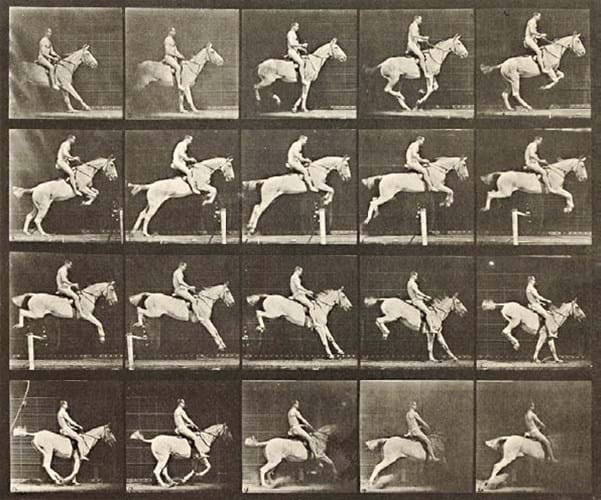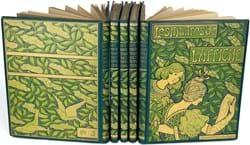
This collection of motion studies published in Philadelphia, 1887, largely features the human form, as well as a menagerie of exotic animals. This precursor to moving film is estimated to sell between $30,000-45,000 (one example shown below right).
Muybridge was a remarkable character. As eadweardmuybridge.co.uk states: “Before his death in 1903, Muybridge would emigrate to America, change his name three times, come close to death and suffer brain damage in a carriage accident. Perhaps most sensationally, he would also be acquitted for the murder of Major Harry Larkyns, his wife’s lover, and the true father of his presumed son Floredo Helios Muybridge.”
And that’s just his private life. His career involved revolutionising photography through the development of instantaneous pictures. To accomplish his famous motion sequences, Muybridge even designed his own high-speed electronic shutter and electro-timer, to be used alongside a battery of up to 24 cameras.
As reported recently in Books and works on paper (ATG No 2276), on January 14 Lyon & Turnbull of Edinburgh‘s top lot was an album containing 95 collotypes from Animal Locomotion…, or as the extended title explains, An Electrophotographic Investigation of Consecutive Phases of Animal Movements. A re-bound, ex-library copy with stamps to verso of the plates, it sold for a record £75,000.
It was published by Muybridge’s principal supporter and backer, the University of Pennsylvania, which had issued a prospectus and catalogue of plates that invited subscribers to select “One Hundred Plates” at a cost of $100. The university also published – in a very limited run – an 11-volume work containing 781 of Muybridge’s motion studies.








